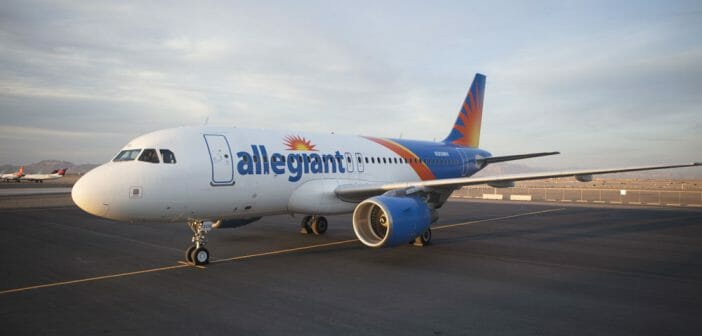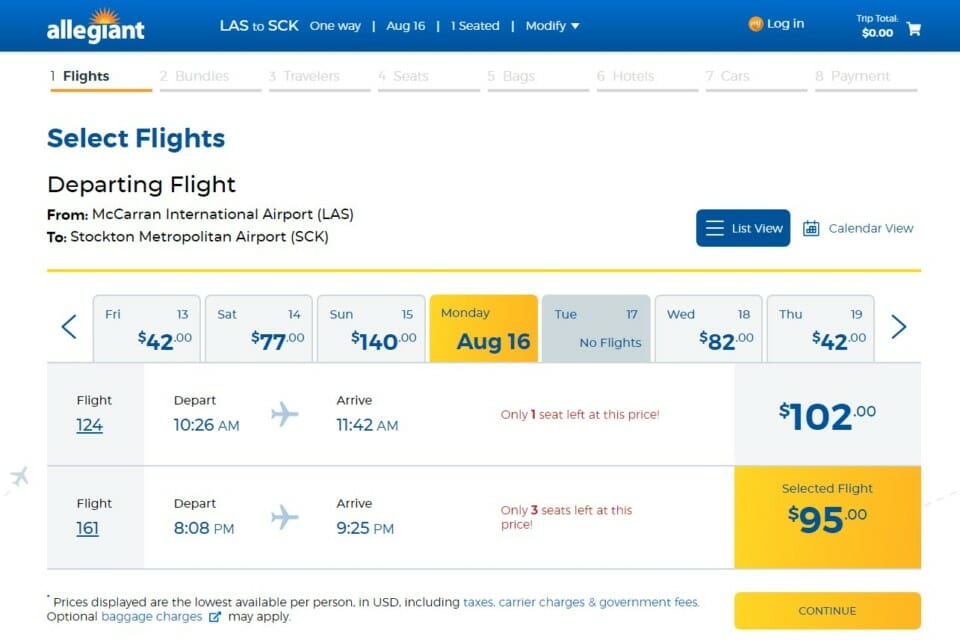Last Monday evening, Allegiant flight 161 departed Las Vegas McCarren Airport (LAS) for a routine, hour-long flight to Stockton CA (SCK). Everything about this 357-mile flight was routine except when it was time to land in Stockton. In this post, I will describe what happened and answer some questions that you may have about the circumstances of this flight.
Landing At Stockton Airport
Nearing the approach to Stockton, the pilot will first get the weather report and then contact the control tower. The weather report is essential for two reasons:
- Aircraft have to take off and land flying into the wind for lift and
- Aircraft need to follow the same takeoff and landing patterns to avoid collisions.
Allegiant 161 is scheduled to land at 9:25 pm after the personnel at the Stockton Airport control tower go home. The control tower is staffed from 7:00 am to 9:00 pm. To compound the issue more was the automated weather information system was not working at the time.
Aircrews normally obtain the airport weather information and the controllers in the tower will give the aircraft precise instructions on how to fly the landing pattern leading up to the landing. The controllers will also give the aircraft final clearance to land.
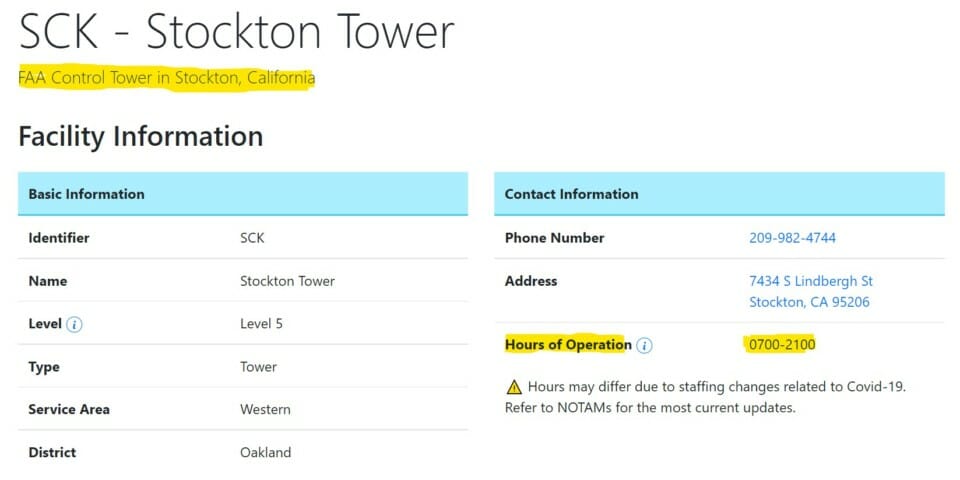
The Flight Was Forced To Divert
Since landing at Stockton was not possible, the captain decided to return to Las Vegas. While the aircraft was en route, the weather at Las Vegas (LAS) had turned to thunderstorms which prevented this flight from landing there. Based on the remaining fuel, the captain elected to divert to Los Angeles International Airport (LAX).
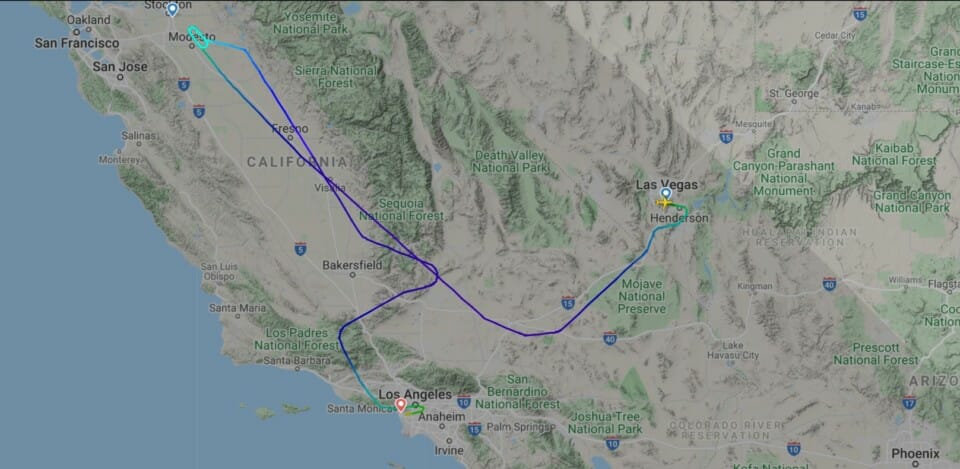
After landing at LAX, the 175 passengers were allowed to deplane and led to a holding room that didn’t have restroom facilities. The passengers were issued $250.00 flight vouchers and they were left to fend for themselves. Allegiant did fly the passengers to Stockton the next day arriving at 2:00 pm on Tuesday, 17 hours after they took off from Las Vegas.
Why Was The Control Tower Closed?
The Federal Aviation Administration (FAA) operates airport control towers which are staffed by FAA-employed air traffic controllers and contract controllers. Staffing hours are based on the level designation by the FAA based on the number of annual operations an airport has. An operation is defined as a “takeoff” or “landing”. Los Angeles International Airport is a high-level airport and is staffed 24-hours per day. Stockton Airport has a lower level designation which has part-time control tower staffing.
Can Aircraft Land Without An Active Control Tower?
When there is no control tower at an airport or the tower is closed, aircraft can take off and land. Pilots are required to communicate with each other by radio using the Common Traffic Advisory Frequency (CTAF). These radio frequencies are listed on the sectional charts (maps) that pilots fly with. This method of spacing out departing and landing aircraft usually works. It works when all pilots involved are paying attention. I was landing a Cessna 182 at an uncontrolled airport when an aircraft taxied onto the active runway and I had to abort the landing on short final approach.
The Weather Report
The weather report is required so the pilot knows which way the wind is blowing and how fast along with other meteorological data. The weather report is obtained from one of three methods:
- Automated Terminal Information System (ATIS) – this is a recorded report made by the control tower staff and updated when the conditions change. ATIS also has airport information such as closed runways and taxiways,
- Automated Surface Observation System (ASOS) – this is a recorded report from weather instrumentation at the airport and
- Automated Weather Observation System (AWOS) – this is a similar recorded from weather instrumentation at the airport.
In the case of Allegiant 161, the ASOS equipment at Stockton Airport was not working. There was no way for the flight crew to obtain the weather information at the airport.
Why Not Divert To Oakland (OAK)?
This is the obvious question. If an airline has to divert, it would prefer to divert to an airport that they already serve. Allegiant does serve Oakland and operates flights between LAS and OAK.
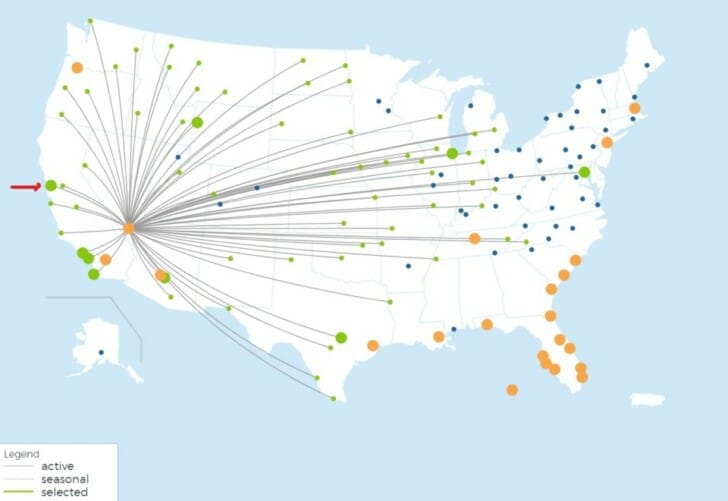
Oakland is only 55 air miles from Stockton and Allegiant has facilities at OAK. After landing at OAK, the airline could have put the passengers on buses for the 70-mile drive to Stockton. Why didn’t Allegiant 161 divert to Oakland? I have no idea and I could find no information on why the decision was made to return to Las Vegas and ultimately Los Angeles over landing in Oakland.
Final Thoughts
While crazy flight diversions are rare, they do happen. These diversions usually occur due to weather conditions being below the required minimum standards to land. In the case of Allegiant 161, it was a combination of a closed control tower and the inability to obtain airport weather conditions. Why does Allegiant schedule a flight to land after the control tower is closed for the day?
Although many passengers aboard this flight described it as “the flight from hell”, the aircraft was operated in a safe manner and the passengers were never in danger.

